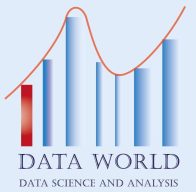
In this article, we will show the similarities and differences between business intelligence and data analysis, with a brief overview of each.
In the beginning, we talk about data analysis, which in general represents data science, which is summarized in the process of extracting useful information from a data set that is examined and processed according to a specific technique in order to obtain a formula that helps take the necessary and appropriate measures to ensure the functioning of the business process or the work of government institutions or scientific bodies. or educational sectors optimally.
Data analytics provides highly efficient techniques in developing the work of the commercial system as a whole, such as improving the buying and selling processes, identifying the most popular and selling products, customer behavior, etc., based on the data resulting from the analysis processes, within the framework of two types of data analysis:
Confirmed Data Analytics (CDA), which relies on statistics to determine the validity of a data set, and Exploratory Data Analytics (EDA), which relies on choosing models and types of data.
Based on the above, we can identify four types of data analysis:
Descriptive analytics: includes descriptions that are based on facts about a prior event, event A, and then event B
Diagnostic analytics: focuses on why these facts occurred, regardless of what happened in the past. B did not happen because of A, but C caused B to happen
Predictive analytics: based on future predictions based on historical data. Because B happened because of C, we expect that B will happen in the future because C happens
Descriptive analytics: depends on directing executive actions towards a specific goal. To prevent B from happening, we must take action Z
As for business intelligence, it includes the plans and techniques adopted by companies and institutions in dealing with business-related data to derive positive results that lead to sound decisions. Data forms, and it allows them to automate data collection and analysis, which makes it easier to carry out all tasks with the least possible time and effort.
Business intelligence to extract key information depends on the data warehouse known as (EDW), which is the main store of primary databases collected from several sources and integrated into a central system used by the company to help it generate reports and build analyzes that in turn lead to taking the right actions.
Based on the aforementioned, we can determine the course of the procedures that make up business intelligence according to the following:
Collecting and converting data from different sources:
Business intelligence tools rely on the collection of regular and random data from various sources, then they are coordinated and classified according to the requirements of companies’ strategies to keep them in the central data store to facilitate their use later in the analysis and exploration processes.
Determine paths and recommendations:
Business intelligence techniques contain an extensive data identification system, and thus the forecasting process by offering proposals and solutions is more accurate and effective.
Presentation of the results in the form of graphic visualizations:
The data visualization process is one of the techniques that has proven effective in understanding the content of the results and sharing them with others. It is a process on which business intelligence relies heavily due to the availability of charts and graphs that enable business owners to form a more comprehensive and accurate view of the results presented.
Take the appropriate measures according to the data generated in a timely manner:
This step is usually done by comparing the previous results with the results presented at the present time for businesses and commercial activities in general, which makes it easier for the owners of these businesses to take the necessary and appropriate measures and make adjustments in record time and build a sound base for future plans.
Differences between business intelligence and data analysis:
We must first touch on the configurational interface of the EDW data warehouse
The data warehouse is the basic environment for storing multi-source data in order to deal with it later, if it has absolutely no connection with the database system used in daily transactions, so the data store is intended to be used by companies and institutions to generate insights for solutions and suggestions for specific practical issues in a timely manner.
Since the data stored within the data warehouse is multi-source and processed via the Internet, this requires that it be extracted from those sources and employed within a strategy that is compatible with the company’s work and then loaded into OLAP (i.e. online processing and analysis), and the Operational Data Store (ODS) is used to prepare Operational and commercial reports, which has a longer storage period than OLAP.
If we want to make a simple representation of the above, we notice that the data market is a miniature model of the data warehouse, but it diverts its attention to a specific functional aspect such as sales, production and promotion plans, and this is done by a specialized branch within the general system.
مقارنة بين ذكاء الأعمال وتحليل البيانات

سنبين في هذا المقال أوجه التشابه والاختلاف بين ذكاء الأعمال وتحليل البيانات مع ذكر نبذة مختصرة عن كل منهما
تنطرق في البداية إلى الحديث عن تحليل البيانات الذي يمثل بالمجمل علم البيانات والذي يتلخص في عملية استخراج المعلومات المفيدة من مجموعة بيانات يتم فحصها ومعالجتها وفق تقنية معينة بغية الحصول على صيغة تساعد على اتخاذ الإجراءات اللازمة والمناسبة لضمان سير العملية التجارية أو عمل المؤسسات الحكومية أو الهيئات العلمية أو القطاعات التعليمية بالشكل الأمثل توفر تحليلاتُ البيانات تقنياتٍ ذات كفاءة عالية في تطوير عمل المنظومة التجارية ككل مثل تحسين عمليات البيع والشراء وتحديد المنتجات الأكثر طلباً وبيعاً وسلوك العملاء وغيرها وذلك بالاعتماد على البيانات الناتجة من عمليات التحليل وذلك في إطار نمطين من تحليل البيانات
(CDA) تحليلات البيانات المؤكدة
التي تعتمد على الإحصاء لتحديد مدى صحة مجموعة البيانات
(EDA) وتحليلات البيانات الاستكشافية
التي تعتمد على اختيار نماذج وأنواع البيانات
: وبناءً على ما سبق يمكننا تحديد أربع أنواع من تحليل البيانات
تحليلات وصفية : تتضمن الوصف الذي يعتمد على الوقائع المتعلقة بحدث سابق
B ثم حدث A حدث
تحليلات تشخيصية : تركز على السبب وراء حدوث تلك الحقائق بغ النظر عما حدث في السابق
, A بسبب B لم يحدث
B كان سبب حدوث C ولكن
تحليلات تنبؤية : تعتمد على التنبؤات المستقبلية بالاعتماد على البيانات التاريخية
, C حدث بسبب B لأن
سيحدث في المستقبل B نتوقع أن
يحدث C لأن
تحليلات وصفية : تعتمد على توجيه إجراءات تنفيذية نحو غاية معينة
B لمنع حدوث
Z يجب علينا اتخاذ الإجراء
أما ذكاء الأعمال فيتضمن الخطط والتقنيات التي تعتمدها الشركات والمؤسسات في التعامل مع البيانات المتعلقة بالأعمال لاستخلاص نتائج إيجابية تفضي إلى قرارات سليمة , وتتيح تقنيات ذكاء الأعمال لأصحاب العمل إيجاد صيغ متنوعة للبيانات لتحديد الأداء الفني للعمل كالبيانات السابقة والبيانات الحالية والبيانات الخارجية والبيانات الداخلية والبيانات المنظمة وغيرها من أشكال البيانات , كما وتتيح لهم أتمتة تجميع البيانات وتحليلاتها مما يسهل القيام بجميع المهمات بأقل وقت وجهد ممكن
يعتمد ذكاء الأعمال لاستخراج المعلومات الرئيسية على مستودع البيانات
(EDW) الذي يعرف باسم
والذي هو المخزن الرئيسي لقواعد البيانات الأولية المجمَّعة من عدة مصادر والمدمجة في نظام مركزي تستخدمه الشركة ليعينها على إنشاء التقارير وبناء التحليلات التي بدورها تفضي إلى اتخاذ الإجراءات الصائبة
: وبناءً على ما ذكر آنفاً يمكن أن نحدد مسار الإجراءات المكوِّنة لذكاء الأعمال وفق ما يلي
: تجميع البيانات وتحويلها من مصادر مختلفة
تعتمد أدوات ذكاء الأعمال على تجميع البيانات المنتظمة والعشوائية من مصادر مختلفة ثم يتم تنسيقها وتصنيفها وفق متطلبات استراتيجيات الشركات لتحفظ بعدها في المخزن البيانات المركزي ليسهل استخدمها لاحقاً في عمليات التحليل والاستكشاف
: تحديد المسارات والتوصيات
تحوي تقنيات ذكاء الأعمال نظام تحديد البيانات بشكل موسع وبالتالي تكون عملية التنبؤ بطرح الاقتراحات والحلول أكثر دقة وفاعلية
: عرض النتائج على شكل تصورات بيانية
تعتبر عملية تصور البيانات من التقنيات التي أثبتت فاعليتها في فهم مضمون النتائج وتشاكرها مع الآخرين وهي عملية يعتمد عليها ذكاء الأعمال بشكل كبير نظراً لما توفره من إعداد المخططات والرسوم بيانية التي يمكن أصحاب الأعمال من تكوين نظرة أكثر شمولية ودقة للنتائج المطروحة
: اتخاذ الإجراءات المناسبة وفقاً للمعطيات الناتجة في الوقت المناسب
وعادة ما تتم هذه الخطوة بمقارنة النتائج السابقة مع النتائج المطروحة في الوقت الراهن للأعمال والأنشطة التجارية بشكل عام مما يسهل على أصحاب هذه الأعمال اتخاذ الإجراءات اللازمة والمناسبة وإجراء التعديلات في زمن قياسي وبناء قاعدة سليمة للخطط المستقبلية
: أوجه الاختلاف بين ذكاء الأعمال وتحليل البيانات
لابد لنا في البداية أن نتطرق إلى البينية التكوينية
EDW لمستودع البيانات
مستودع البيانات هو البيئة الأساسية لتخزين البيانات متعددة المصادر بغية التعامل معها لاحقاً إذا أن لا صلة له إطلاقاً بمنظومة قاعدة البيانات المستخدمة في بالتعاملات اليومية إذاً مخزن البيانات معد لتستخدمه الشركات والمؤسسات لتكوين رؤى لحلول واقتراحات لقضايا عملية محددة في الوقت المناسب
وبما أن البيانات المخزنة داخل مستودع البيانات هي متعددة المصادر ومعالجة عبر الإنترنت فهذا يتطلب أن يتم استخراجها من تلك المصادر وتوظيفها ضمن استراتيجية تتوافق مع عمل الشركة
OLAP ثم يتم تحميلها في
( أي المعالجة والتحليل عبر الإنترنت )
(ODS) كما ويستخدم مخزن البيانات التشغيلية
لتجهيز التقارير التشغيلية والتجارية وهو يتمتع
OLAP بمدة تخزين أطول من
وإذا أردنا إجراء تمثيل بسيط لما سبق نلاحظ أن سوق البيانات هو نموذج مصغر من مستودع البيانات إلا أنه يصرف اهتمامه إلى جانب وظيفي معين كالمبيعات والإنتاج وخطط الترويج وذلك يتم بواسطة فرع مختص ضمن المنظومة العامة

